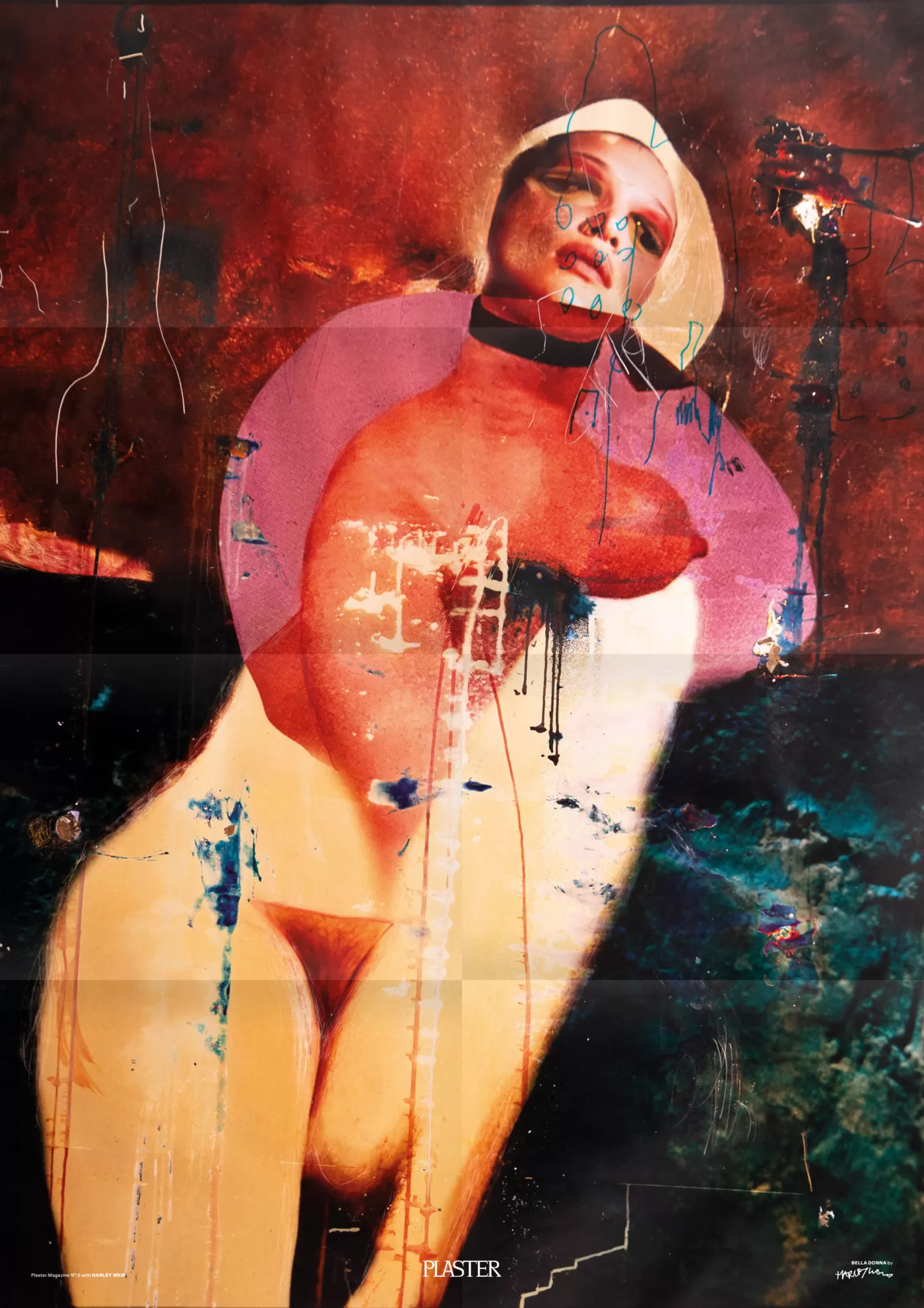The Church of Harley Weir
17 min read
Harley Weir will use anything – spit, pee, probiotics, perfumes, tears and blood – to create her dynamic, deep-colour toned abstract works
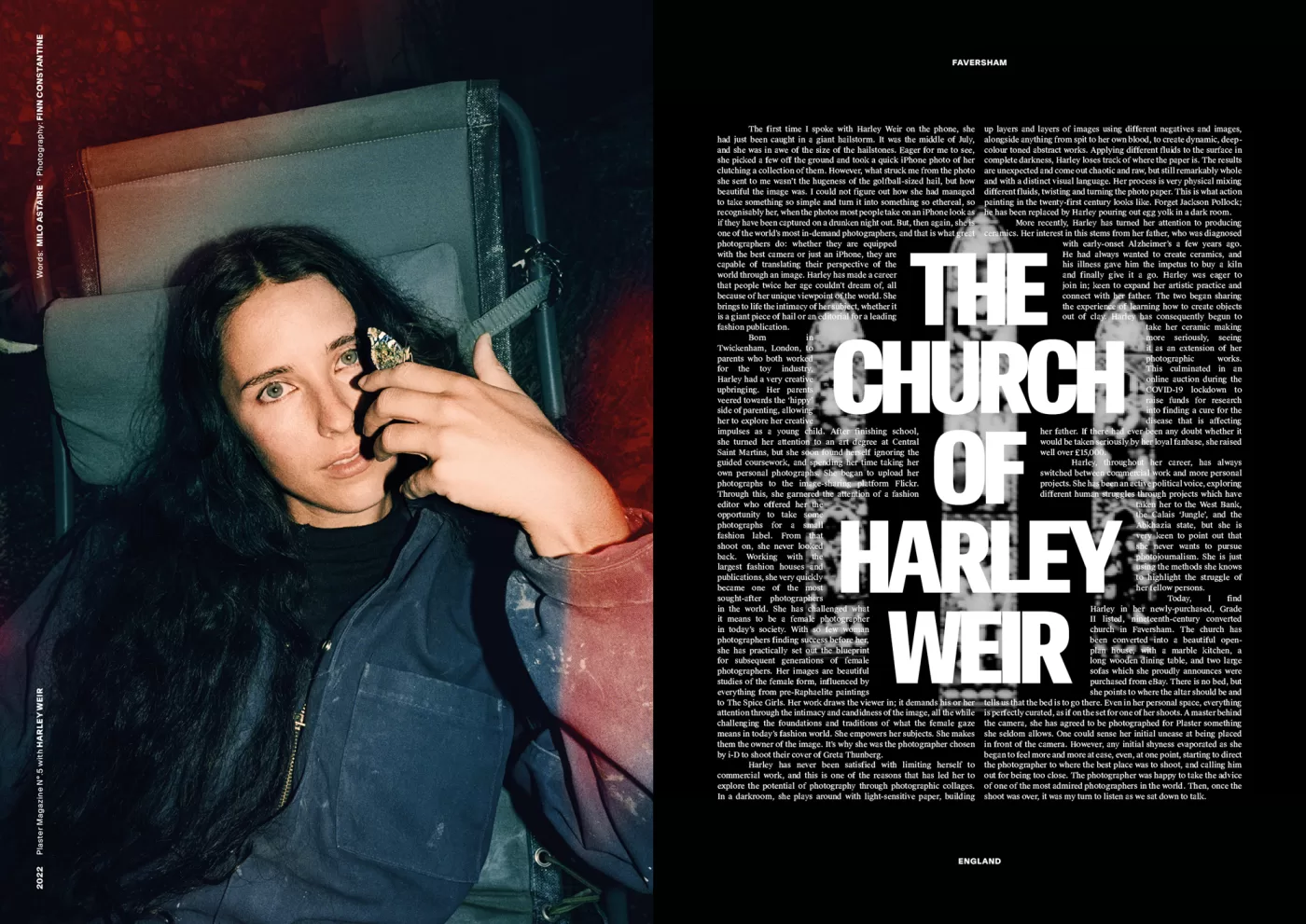
The first time I spoke with Harley Weir on the phone, she had just been caught in a giant hailstorm. It was the middle of July, and she was in awe of the size of the hailstones. Eager for me to see, she picked a few off the ground and took a quick iPhone photo of her clutching a collection of them. However, what struck me from the photo she sent to me wasn’t the hugeness of the golfball-sized hail, but how beautiful the image was. I could not figure out how she had managed to take something so simple and turn it into something so ethereal, so recognisably her, when the photos most people take on an iPhone look as if they have been captured on a drunken night out. But, then again, she is one of the world’s most in-demand photographers, and that is what great photographers do: whether they are equipped with the best camera or just an iPhone, they are capable of translating their perspective of the world through an image. Harley has made a career that people twice her age couldn’t dream of, all because of her unique viewpoint of the world. She brings to life the intimacy of her subject, whether it is a giant piece of hail or an editorial for a leading fashion publication.
Born in Twickenham, London, to parents who both worked for the toy industry, Harley had a very creative upbringing. Her parents veered towards the ‘hippy’ side of parenting, allowing her to explore her creative impulses as a young child. After finishing school, she turned her attention to an art degree at Central Saint Martins, but she soon found herself ignoring the guided coursework, and spending her time taking her own personal photographs. She began to upload her photographs to the image-sharing platform Flickr. Through this, she garnered the attention of a fashion editor who offered her the opportunity to take some photographs for a small fashion label. From that shoot on, she never looked back. Working with the largest fashion houses and publications, she very quickly became one of the most sought-after photographers in the world. She has challenged what it means to be a female photographer in today’s society. With so few woman photographers finding success before her, she has practically set out the blueprint for subsequent generations of female photographers. Her images are beautiful studies of the female form, influenced by everything from pre-Raphaelite paintings to The Spice Girls. Her work draws the viewer in; it demands his or her attention through the intimacy and candidness of the image, all the while challenging the foundations and traditions of what the female gaze means in today’s fashion world. She empowers her subjects. She makes them the owner of the image. It’s why she was the photographer chosen by i-D to shoot their cover of Greta Thunberg.
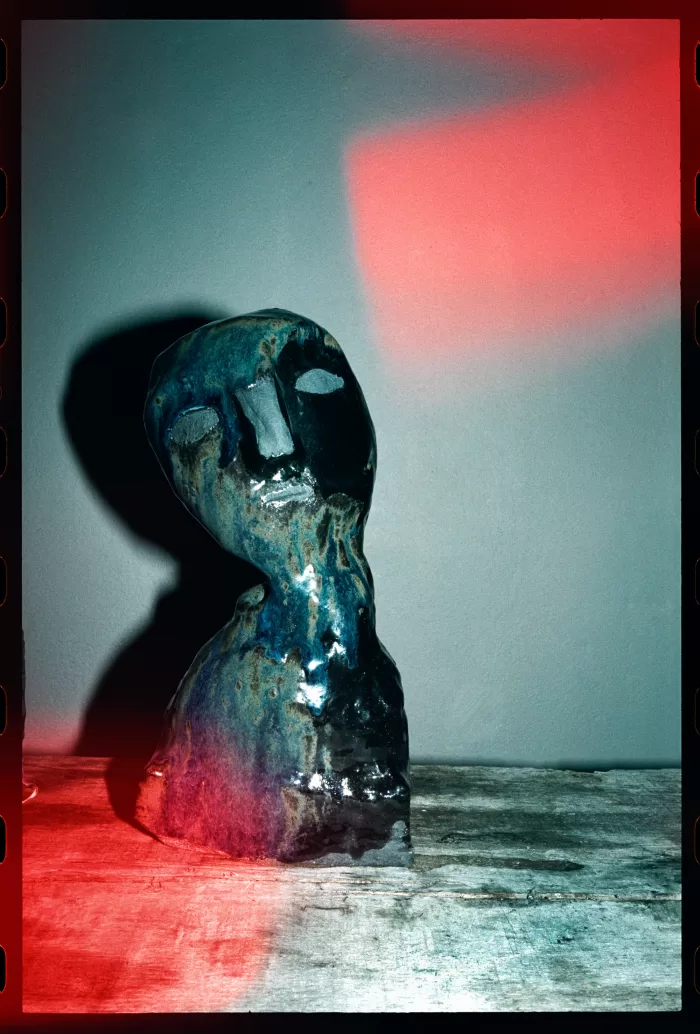
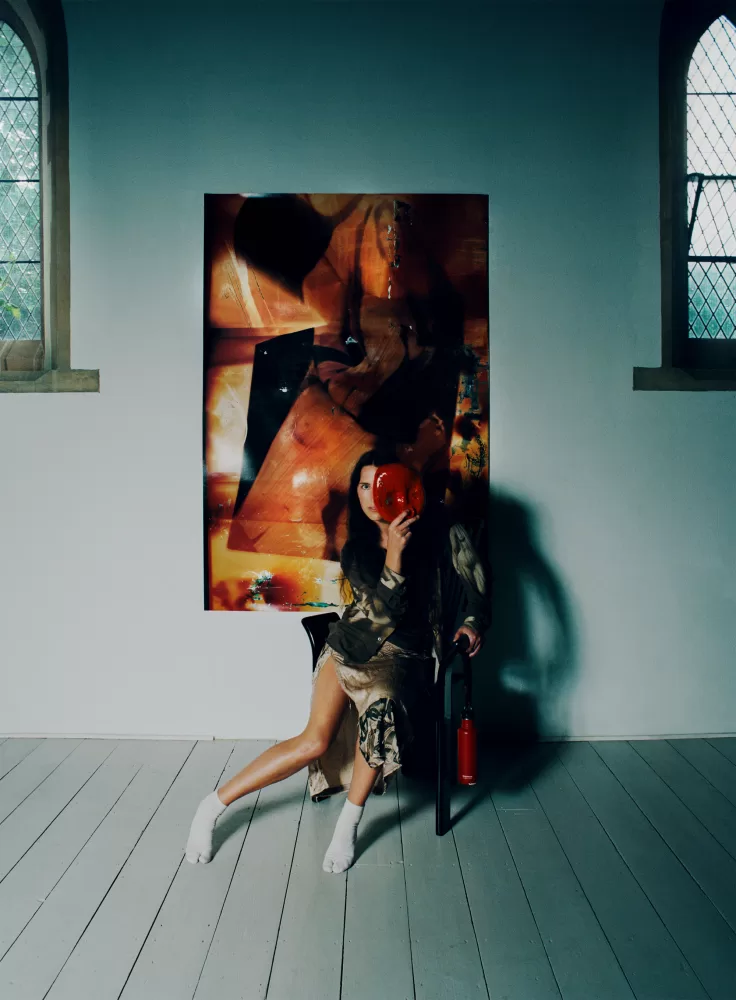
Harley has never been satisfied with limiting herself to commercial work, and this is one of the reasons that has led her to explore the potential of photography through photographic collages. In a darkroom, she plays around with light-sensitive paper, building up layers and layers of images using different negatives and images, alongside anything from spit to her own blood, to create dynamic, deep-colour toned abstract works. Applying different fluids to the surface in complete darkness, Harley loses track of where the paper is. The results are unexpected and come out chaotic and raw, but still remarkably whole and with a distinct visual language. Her process is very physical⎯mixing different fluids, twisting and turning the photo paper. This is what action painting in the twenty-first century looks like. Forget Jackson Pollock; he has been replaced by Harley pouring out egg yolk in a dark room.
More recently, Harley has turned her attention to producing ceramics. Her interest in this stems from her father, who was diagnosed with early-onset Alzheimer’s a few years ago. He had always wanted to create ceramics, and his illness gave him the impetus to buy a kiln and finally give it a go. Harley was eager to join in; keen to expand her artistic practice and connect with her father. The two began sharing the experience of learning how to create objects out of clay. Harley has consequently begun to take her ceramic making more seriously, seeing it as an extension of her photographic works. This culminated in an online auction during the COVID-19 lockdown to raise funds for research into finding a cure for the disease that is affecting her father. If there had ever been any doubt whether it would be taken seriously by her loyal fanbase, she raised well over £15,000.
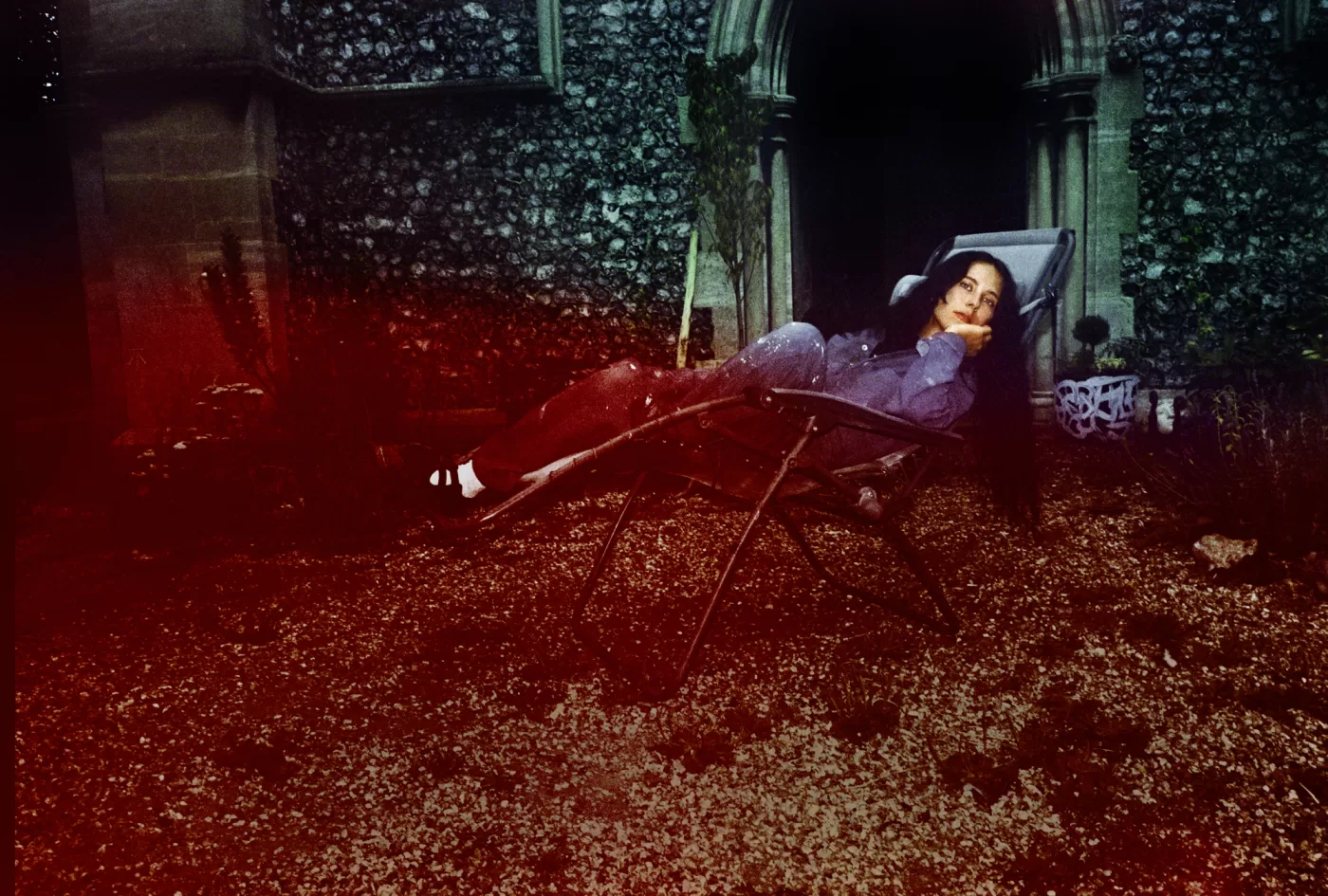
Harley, throughout her career, has always switched between commercial work and more personal projects. She has been an active political voice, exploring different human struggles through projects which have taken her to the West Bank, the Calais ‘Jungle’, and the Abkhazia state, but she is very keen to point out that she never wants to pursue photojournalism. She is just using the methods she knows to highlight the struggle of her fellow persons.
Today, I find Harley in her newly-purchased, Grade II listed, nineteenth-century converted church in Faversham. The church has been converted into a beautiful open-plan house, with a marble kitchen, a long wooden dining table, and two large sofas which she proudly announces were purchased from eBay. There is no bed, but she points to where the altar should be and tells us that the bed is to go there. Even in her personal space, everything is perfectly curated, as if on the set for one of her shoots. A master behind the camera, she has agreed to be photographed for Plaster — something she seldom allows. One could sense her initial unease at being placed in front of the camera. However, any initial shyness evaporated as she began to feel more and more at ease, even, at one point, starting to direct the photographer to where the best place was to shoot, and calling him out for being too close. The photographer was happy to take the advice of one of the most admired photographers in the world. Then, once the shoot was over, it was my turn to listen as we sat down to talk.
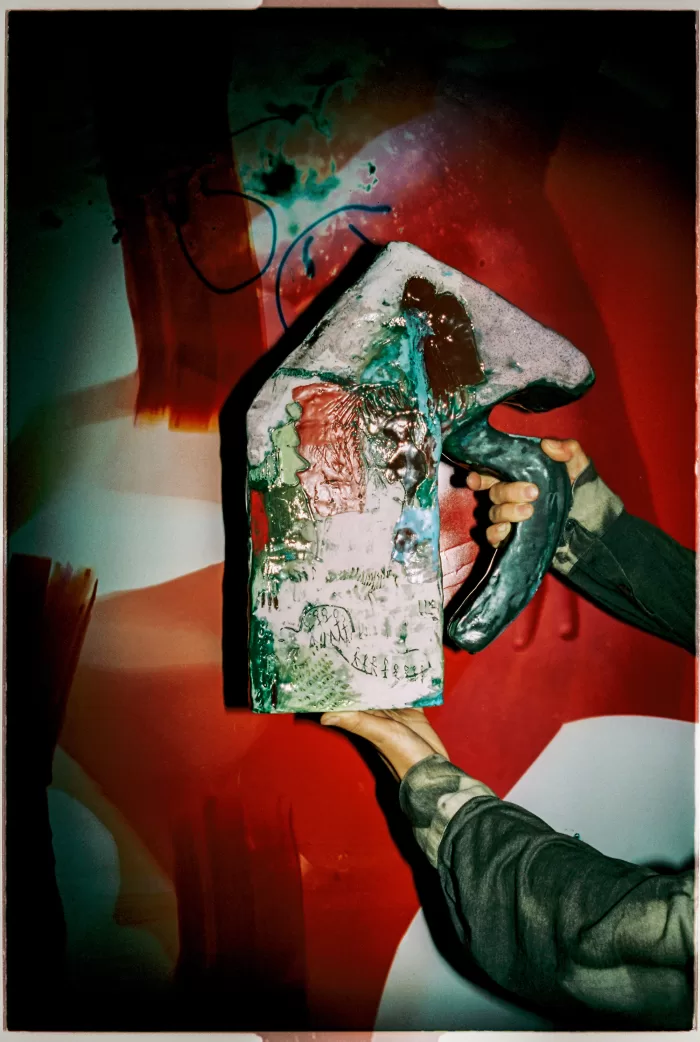
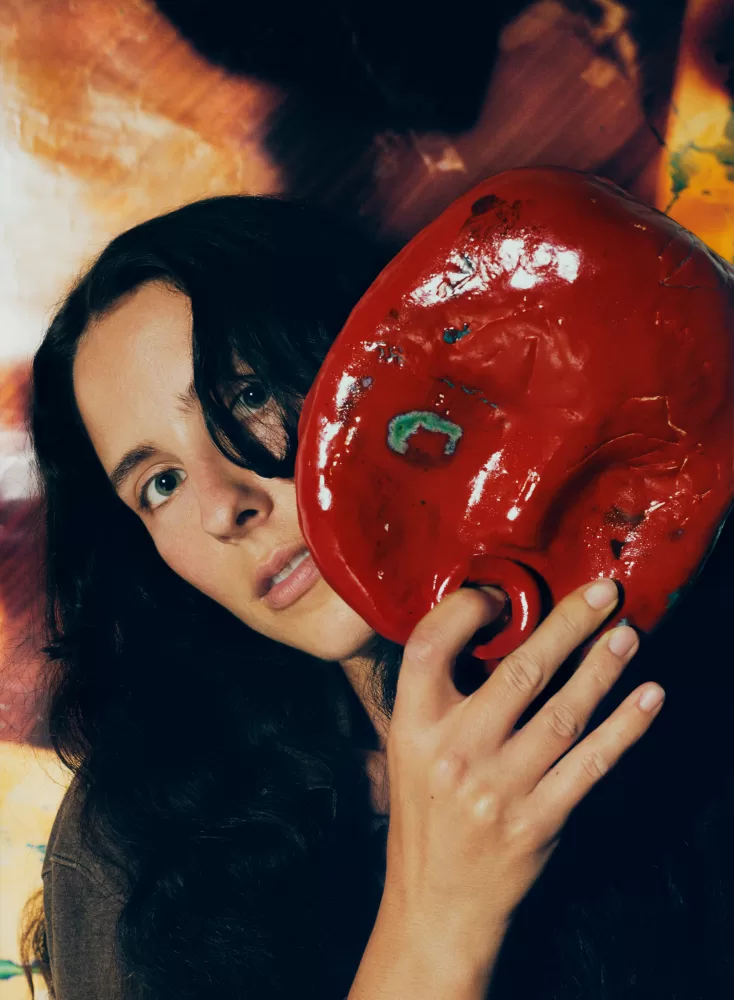
Could you tell me about your upbringing? Where did you grow up?
I grew up in deep south west London. My parents gave me a lot of freedom growing up, mostly due to them being bohemian types but also because they worked hard and didn’t have much time to fuss. They both worked in the toy industry. My mum worked for Sindy doll. She used to mock-up the dolls for the product design, paint their eyes, root the hair, and make tiny clothes for them.
Sorry for my naivety, but what is a Sindy doll?
The Sindy doll is a British and slightly cheaper version of the Barbie doll. I was always very embarrassed about it at the time. People would say, “You said your mum worked for Barbie!? But these are Sindy dolls”, and I would be like, “Oh God” because Barbie was much cooler. So my mum did that, and my dad worked in the same company, but for Action Man and My Little Pony.
No way! What did your dad do for Action Man?
He was a packaging designer, but he ended up becoming a handyman when graphics went digital and the toy industry dried up. He’s very gifted with his hands, so it suited him well. My mother became an art teacher.
I imagine having creative parents inspired you to look at things slightly differently?
I’ve been lucky to have always had art available to me. I remember the first time I saw what I thought was great art: it was a postcard up in my uncle’s houseboat of Hylas and the Nymphs. I remember being besotted by the image of the water nymphs gently dragging Hylas into this pond. It was calm but also very sinister. It’s very pre-Raphaelite, and that was probably the first art object that I remember I found really, really captivating.
Now that you mention the pre-Raphaelites, I can see their distinct visual language in your photographic work, especially the models you use.
Yeah, the influence is definitely always there. I think that’s probably partly due to where I grew up. It was very suburban, leafy, and full of soft nature like the images depicted in those pre-Raphaelite paintings. People tell me I look a bit pre-Raphaelite. Maybe that’s also why I connect to it, that very old-fashioned stereotype of beauty, Botticelli’s Venus, etc., it’s an interesting starting point for commenting on current beauty trends.
What else has influenced you?
The Spice Girls were a great influence on my taste… unfortunately! I remember I used to collect Spice Girls posters, and I hid them in a secret closet. The Spice Girls were a big thing for young girls at the time. The first female heroes of my generation. It felt like a very strong movement, but looking back, maybe it wasn’t the best message for the youth of the time.
You studied at Central Saint Martins?
Yes, I studied fine art, but I would love to return and do it again. At the time, I was very possessed by the idea of being an independent woman, so I decided to begin working while I was there. I had a part-time job at a pub. Then I started working as a fashion photographer to pay for the course, which ultimately took up all of my time. It was actually an accident that I ended up becoming a photographer. Someone just asked me if I wanted to do a fashion shoot because I used to post my pictures online.
Where did you post the pictures?
Flickr.
Oh… we are going way back! Does Flickr still exist?
I think it does, but I don’t really know what it’s for. I don’t know who is using it. Someone must be! Anyway, someone saw my work on Flickr when I was 17 and asked me to do a fashion shoot, and I was like, “Yeah!”, and they told me they only had a budget of £300 and I was like, “Oh my God I’ll do anything for that much money!”
Did you pocket the budget?
Of course! I spent £5 on a train ticket and £20 on film and pocketed the rest.
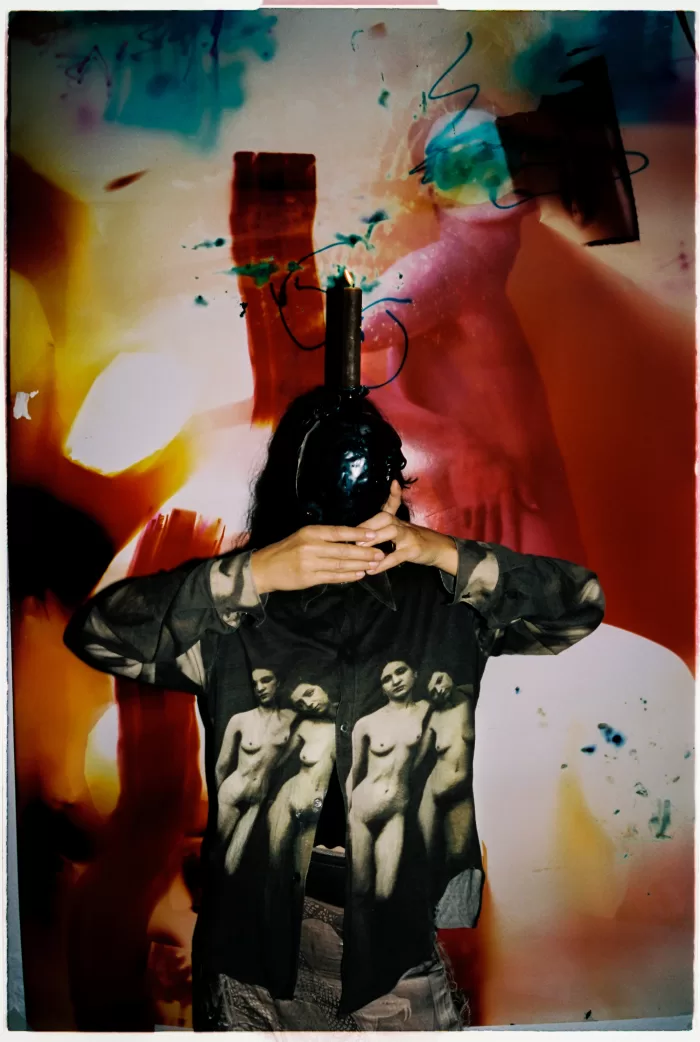
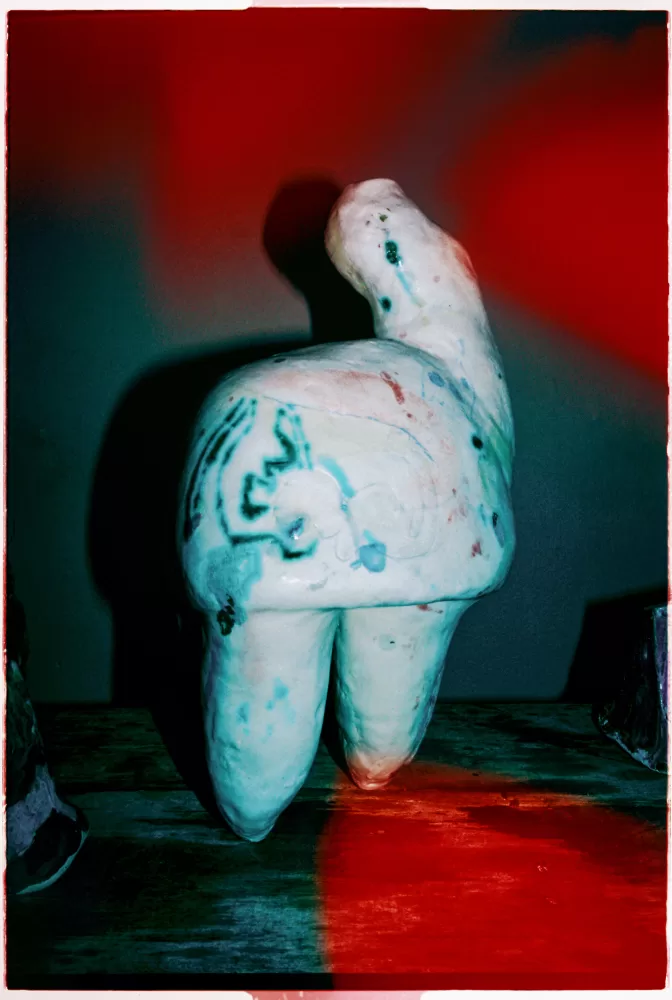
Was there a lightbulb moment when you thought, “I can make a career out of taking these photographs”?
I think I was so busy that I didn’t really have a chance to realise what I was up to, but I was really grateful.
Was there anything in your work that you felt you wanted to explore or say when you were starting out?
I think fashion photography can be a really interesting way of understanding the woman. I was intrigued and excited about learning about female desire through my work. In the beginning, when I first started, I primarily took photographs of guys. Most of my projects consisted of photographing men in archetypal female situations, men as Ophelia or Venus for example.
What photographers’ work were you looking at during that time?
Araki. I used to love Sally Mann and Peter Beard. Beard was my first love. My dad would read his books to me when I was a kid. I found it strange that fashion from the outside was such a female-looking world, yet, so few women were behind the camera. I really wanted to intern for a female pornographer at the time and was really excited about that, but it didn’t happen. On her website, she claimed to be the only female porn director in the UK and I thought “how can that be?” I was interested in the idea of understanding my desires because there is definitely a point where, as a girl, you look around, and you realise everything you’ve ever read was written by a man, or every porno you’ve ever watched was directed by a man, every film… and you are like, “Oh shit, what do I desire? How can I know what I desire if everything I’ve ever looked at has been made by a guy anyway?” So I think it was an interesting time in fashion for me to do my thing and figure out what I desired and if I could ever know what that was/is.
When you are planning an image for a fashion shoot or editorial, how aware are you of its life beyond the assignment?
I try to be in the moment as much as possible, but I think the image can have much more power than I realise. They define eras. Examining how fashion has changed over the years you can see the politics through styles and how our attitudes have changed toward the human body. When I think about it, it’s exciting to be a part of that.

Your collages seem, at first glance, so chaotic, but the deeper you look, the more one can really start to appreciate how considered they actually are. How do you get such a distinct look to your collages?
It’s an extreme amount of layering that starts with my own analogue images, then I add found images, fluids, scratches… I use a lot of waste products and some ingredients, spit, pee, probiotics, perfumes, contact lenses, tears, ingrown hair lotion… the list is long and winding, and though I have tested them over and over, the results are rarely the same. The erratic nature of how they come together really excites me.
Are you using other people’s body fluids?
Mine and others’, yeah, but mainly mine.
So you are touching other people’s spit and urine?
I wear gloves. The products I use often smell, and because I apply them in the dark, the bottles are covered in one another’s juices and are rather repellent to look at and touch. There is quite a creative force in the disgusting though and I do feel there’s something necessary to the sicko-ness of it all. It does go through a processing machine though, so it gets completely cleaned off. Only the chemical stain is left behind. In my latest works, I have used superfoods. Spirulina, moringa powder, fruit extracts, and things like that. Better for the covid generation.
You’re the female Gilbert & George from the sounds of it.
I guess so!
Do you find yourself rummaging in the streets for things to use?
No, no, mostly things from home. Usually things that lurk in the back of my cupboards yearning for a new lease of life or the bin: beauty products, superfood powders, etc.
The way you create your works seems very physical, it’s like a form of action painting.
Yes. It’s all very physical, like a witch in total darkness. Washing paper with smelly potions, it very much feels like a ritual. There’s something ancient about it. I think about people in the past experimenting with local solutions to discover new ways of doing things, like using octopus ink to write with, things like that. The time in the dark often goes on until very late and it can be difficult to navigate. I often spill things or trip over. It can quickly go from a cathartic process to a very frustrating one. I try to plan it out in my head but it all becomes a blur in the darkness.
You have also recently started to make ceramics?
My dad was diagnosed with Alzheimer’s about three or four years ago. He always wanted to do ceramics, so he bought himself a kiln and decided he was finally going to do it. I wanted to spend more time with him and learn from him. Ceramics seemed the perfect excuse. I loved sitting with him, not discussing the fact that he has Alzheimer’s, just making things together. Ceramics is such a great physical form of art-therapy,
It’s great that you are able to connect with your dad on that level.
Yeah. He has had his driving licence taken away from him because of Alzheimer’s and he can’t work. His freedom has been taken away and his purpose for living, so I think doing ceramics is really important for him as a lifeline.
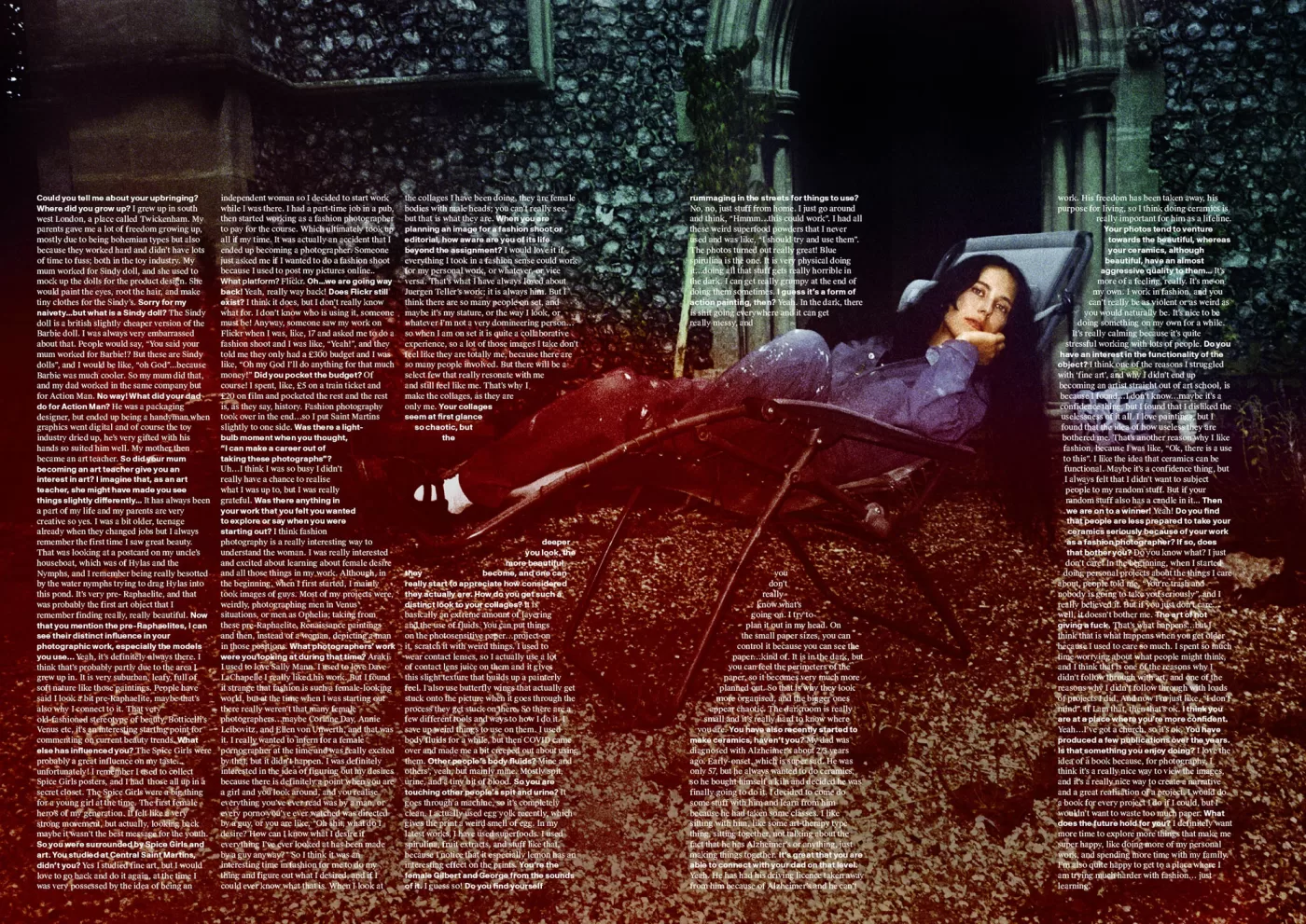
Your photos tend to venture towards the beautiful, whereas your ceramics, although beautiful, have an almost aggressive quality to them…
It’s more of a feeling, really. It’s me on my own, thinking. I work in fashion, which is always a collaboration, and you can’t really be as you would naturally be in front of a large group of strangers, not me at least. It’s nice to be doing something on my own for a change. It’s really calming.
Do you have an interest in the functionality of an object?
I think one of the reasons I struggled with ‘fine art’, and why I didn’t end up becoming an ‘artist’ straight out of art school, is because I found… I don’t know…maybe it’s a confidence thing, but I found that I disliked the uselessness of it all. I thought art was sacred and shouldn’t be sold and who would want the crap I make anyway? I was drawn to fashion because I could hide behind its purpose. I like the idea that ceramics can be functional, but I’m coming round to the idea of them being something else… something useless but more profound… let’s see.
Have you found that people are less prepared to take your ceramics seriously because of your work as a fashion photographer? If so, does that bother you?
Do you know what? I just don’t care! Well, I do a bit, but not as much as I did. In the beginning, when I started doing personal projects about the things I cared about, people told me, “You’re trash and nobody is going to take you seriously”, and I really believed it. But it doesn’t bother me anymore. I just got to get on with it.
The art of not giving a fuck.
I spent so much time worrying about what people might think.
You have produced a few publications over the years. Is that something you enjoy doing?
I love the idea of creating a book because, for photography, it’s the perfect way to view the images, and it’s a really nice way to create a narrative and a great realisation of a project. I would like to do a book for every project but I wouldn’t want to waste too much paper.
What does the future hold for you?
I definitely want more time to explore the things that make me happy, like doing more of my personal work, and spending more time with my family and friends . I would also like to get to a place where I am trying harder with fashion… just learning. To keep learning.
